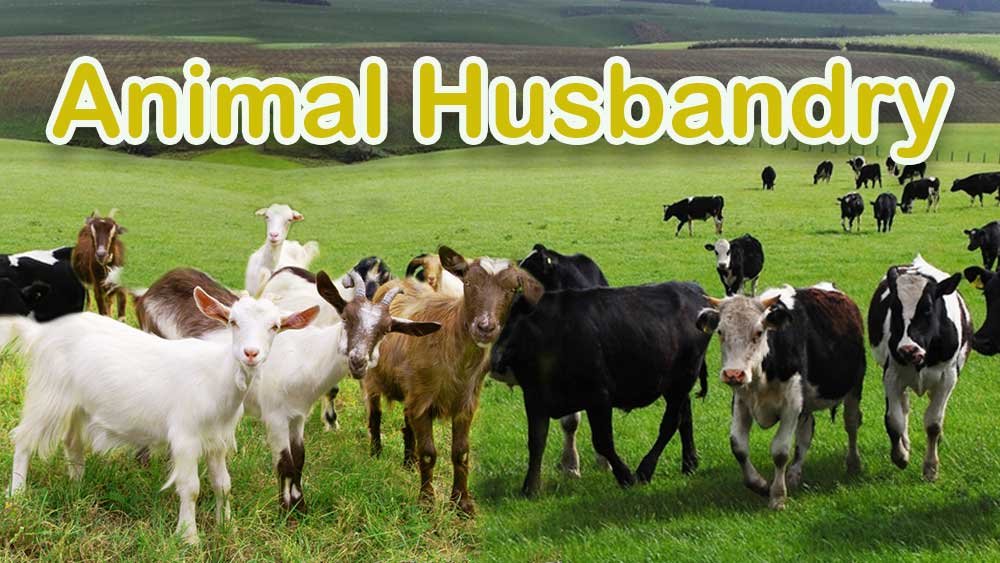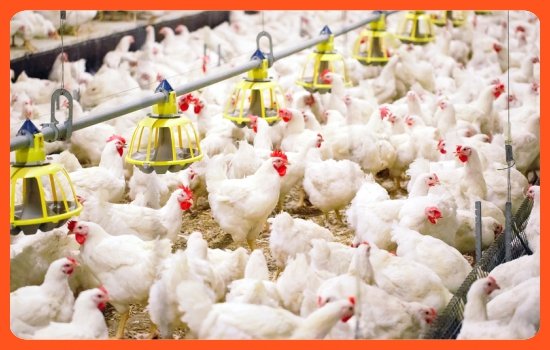This article is focused on animal husbandry, specifically poultry farming. We will explore the various aspects of poultry farming, including its history, breeds, and management practices.
This article aims to comprehensively understand animal husbandry, specifically poultry farming, and its importance in the agricultural industry. Whether you are a student, farmer, or simply interested in learning more about the topic, this article is an excellent resource to gain insight into this essential aspect of animal husbandry.
Introduction: Animal Husbandry Poultry Farming
Animal husbandry refers to the breeding and raising of animals for their products, such as meat, milk, eggs, and other by-products. One of the most common types of animal husbandry is poultry farming, which involves the raising of domesticated birds, such as chickens, turkeys, ducks, and geese, for their eggs and meat.

Poultry farming is a rapidly growing industry, with millions of birds raised and processed each year. In this article, we will discuss the various aspects of animal husbandry poultry farming, including its history, methods, and significance.
History: Animal Husbandry Poultry Farming
Poultry farming has been practised for thousands of years, with the ancient Egyptians and Romans breeding chickens and other birds for food and ritual purposes. In the 20th century, the development of new technologies and breeding techniques led to the growth of large-scale commercial poultry farming, which now accounts for the majority of the world’s poultry production.
Methods: Animal Husbandry Poultry Farming
Poultry farming can be done in various ways, including free-range, cage-free, and conventional methods. Free-range farming allows birds to roam freely outdoors, while cage-free farming provides them with indoor space to move around.
Conventional farming involves housing birds in cages and providing them with artificial lighting and heating. Each method has its advantages and disadvantages, with free-range and cage-free methods being more humane, but also more expensive, while conventional farming is more cost-effective but can be less humane.
Breeding and Rearing: Animal Husbandry Poultry Farming
Breeding and poultry rearing involves careful bird selection based on desired traits, such as egg production or meat yield. Birds are then hatched from eggs using artificial incubation methods and reared until they are ready for slaughter or egg production. Careful attention must be paid to factors such as diet, housing, and disease control to ensure the health and productivity of the birds.
Disease Control: Animal Husbandry Poultry Farming
Disease control is a crucial aspect of poultry farming, as the proximity of birds in commercial operations can increase the risk of disease outbreaks. Vaccination, biosecurity protocols, and proper hygiene practices can help prevent spreading diseases such as avian influenza and salmonella.
Environmental Impact: Animal Husbandry Poultry Farming
Poultry farming can significantly impact the environment, particularly in areas with large concentrations of birds. Waste products such as manure can pollute waterways and cause environmental damage. Sustainable farming practices, such as using manure as fertilizer or converting waste into biogas, can help minimize the environmental impact of poultry farming.
Benefits of Animal Husbandry and Poultry Farming
Animal Husbandry and Poultry Farming are two of the most important aspects of modern farming and agriculture. Animal Husbandry involves the breeding and raising of livestock, while Poultry Farming involves rearing poultry for the purpose of producing eggs, meat, and other byproducts. Both of these practices have numerous benefits, ranging from providing food to improving the environment and economy.
Animal Husbandry provides a source of protein-rich food, primarily in the form of meat and dairy products, which can be used to supplement the diets of humans and animals. It also ensures a steady supply of animal products such as wool, leather, and fur. Additionally, it helps to reduce the number of wild animals and prevents overgrazing of land.
Poultry Farming has numerous benefits, ranging from providing food to improving the environment and economy. It provides a reliable source of eggs and meat, which are rich in proteins and other essential nutrients. Poultry Farming is also a good source of income for farmers, as it is a highly profitable business. Furthermore, it helps to reduce the environmental burden of raising and transporting livestock, as poultry can be raised in smaller spaces and with less resources.
Overall, Animal Husbandry and Poultry Farming are essential components of modern farming and agriculture and have numerous benefits. They provide a reliable source of food and income for farmers, reduce the environmental burden of raising livestock, and help to improve the environment and economy.
Types of Poultry Breeds and Animal Husbandry
Animal husbandry and poultry farming is an important sector of the agricultural industry. It involves the raising of various types of poultry for different purposes, such as for eggs, meat, and feathers. Different breeds of poultry have been developed over the years to suit different needs and conditions. Some types of poultry are well-suited for commercial production, while others are more suited to small-scale or hobby farming.
The most common breeds of poultry include chickens, turkeys, ducks, geese, and quail. Each of these species has different characteristics and qualities that make them suitable for different purposes. Chickens are the most widely kept poultry, and they are commonly used for eggs and meat. Turkeys are popular for their large size and meaty flavor, while ducks, geese, and quail are all raised for their feathers.
Animal husbandry, while primarily focused on poultry, also includes other types of livestock such as cattle, sheep, goats, and pigs. These animals are raised primarily for their meat, milk, and other products. Animal husbandry is an important part of the agricultural industry and is necessary for the production of healthy, quality food for humans.
Equipment and Supplies for Animal Husbandry and Poultry Farming
Animal husbandry and poultry farming is an important sector of the agricultural industry, providing valuable goods and services for both humans and animals. It requires the use of specialized equipment and supplies to ensure successful and efficient operations. These supplies include feed, housing, health and hygiene products, animal identification systems and more.
To ensure the best possible results, it is important to invest in quality equipment and supplies that are tailored to the specific needs of the farm. With the right supplies and equipment, farms can ensure healthy and productive animal populations, and maximize efficiency and profitability.
Setting Up a Poultry Farm and Animal Husbandry Business
Setting up a poultry farm and animal husbandry business is no small task. It requires knowledge, skill, patience, and a significant financial investment. Before taking on this venture, it is important to research the area, acquire necessary permits and licenses, and develop a business plan that outlines the goals and strategies for success.
Additionally, it is important to consider the health of the animals and the environment, as well as the potential for profit. By taking the time to plan and prepare for this business venture, one can ensure a successful and profitable poultry farm and animal husbandry business.
Current Trends and Developments in Animal Husbandry and Poultry Farming
Animal husbandry and poultry farming are two essential agricultural sectors that are rapidly evolving with the introduction of new technologies. With the focus on sustainability and efficiency, producers are increasingly looking to new methods of production and management to increase their output and reduce their costs. Advances in genetics, biosecurity and animal health management, nutrition and feeding, housing and animal welfare are just some of the areas in which significant progress has been made in recent years.
New practices such as precision agriculture are now being implemented in order to ensure optimal productivity while reducing environmental impact. The use of technology, such as automated systems and artificial intelligence, is expected to further revolutionize the industry as producers look to capitalize on advances in data analytics and machine learning. As animal husbandry and poultry farming continue to evolve, it is critical for producers to stay informed on the latest trends and developments in order to remain competitive in the market.
Significance
Poultry farming is a significant industry, providing a source of income and food for millions of people worldwide. The production of eggs and meat from poultry is an important part of the global food supply, with demand expected to continue growing in the future. In addition to its economic significance, poultry farming also plays a role in the social and cultural practices of many communities around the world.
FAQs: Animal Husbandry Poultry Farming
Q1: What are the different types of poultry birds commonly raised for commercial purposes?
Ans: The different types of poultry birds commonly raised for commercial purposes include chickens, turkeys, ducks, geese, quails, and pigeons.
Q2: How are poultry birds vaccinated to prevent diseases?
Ans: Poultry birds are vaccinated by administering vaccines through drinking water, feed, injection, or spraying. Common vaccines include Marek’s disease, Newcastle disease, and infectious bronchitis.
Q3: How long does it take for a broiler chicken to reach market weight?
Ans: Broiler chickens typically take around 6 to 8 weeks to reach market weight, which is around 2-3 pounds.
Q4: What are the most common health issues that affect poultry birds?
Ans: The most common health issues that affect poultry birds include respiratory diseases, such as Newcastle disease and infectious bronchitis, as well as digestive disorders, such as coccidiosis and enteritis.
Q5: What are the common management practices followed in poultry farming?
Ans: The common management practices followed in poultry farming include proper sanitation and hygiene, timely vaccination, feed and water management, and proper housing and ventilation.
Q6: How does poultry farming contribute to the economy?
Ans: Poultry farming contributes to the economy by providing employment opportunities, producing meat and eggs for consumption, and contributing to the export sector. It is also a major source of income for small-scale farmers.
